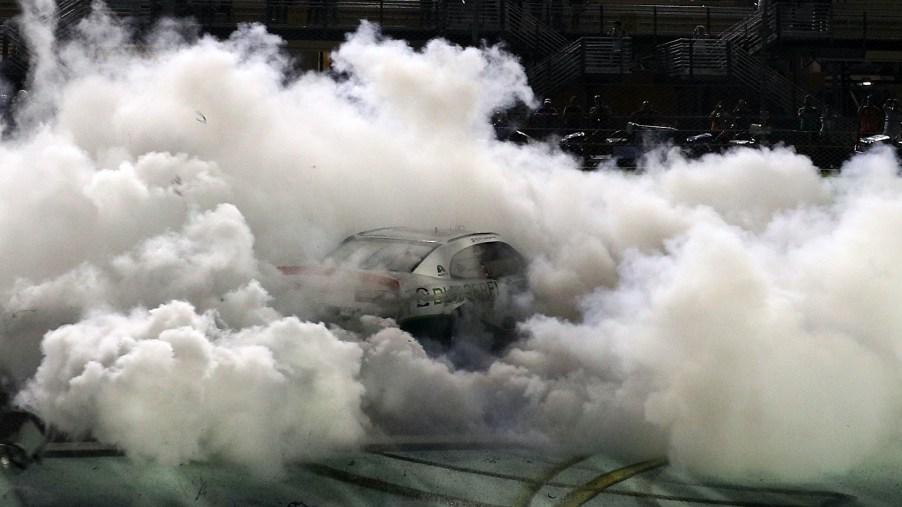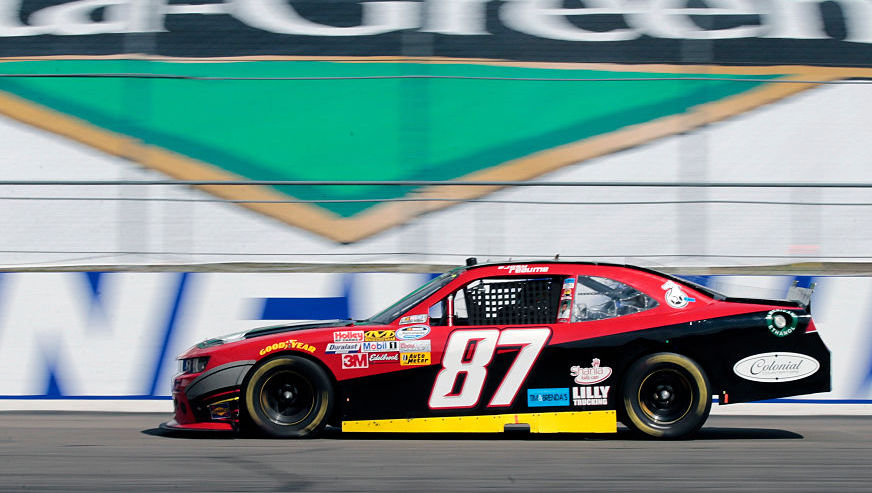
Daily Driving a NASCAR Racecar Would Be An Absolute Nightmare
If you are into cars at all, you have probably, at least once, dreamed of driving a racecar. Many of us dream of actually becoming a pro racing driver, but even if you haven’t taken the dream that far, you would probably love the opportunity to try it out. Even more so, if someone were to offer you the most popular racing car in the U.S. for free as your daily driver, you’d probably jump at the chance. Well, you might be in for a surprise when you learn what driving a NASCAR racecar is really like.
Can you buy a NASCAR racecar?
You can, actually, but you probably don’t want to. First of all, they may look like a normal-ish car, but they are far from it. Secondly, they seem very hard to drive.
Unlike regular cars that the government and the EPA regulate, NASCAR cars are only regulated by NASCAR. They are not required to have things that you and I tend to want our cars to have, like headlights, tail lights, blinkers, and, oh yea, doors. You would have to crawl in and out of the windows to get in and out of it. These things are barely cars at all. I mean, they are, in the sense that they have four wheels, an engine, a steering wheel, a transmission, and a seat, but other than that, they have nothing to do with what we are used to driving.
How much power does a NASCAR have?
They tend to make about 750 horsepower. There are piles of regulations and rules for what the racing teams can do to get this power. For instance, NASCAR motors have to get their power without turbochargers or superchargers. Everything is naturally aspirated.

These massive V8 engines are somewhat similar to what can be found in road-legal cars, except they are far less efficient and user-friendly. According to How Stuff Works, they still used carburetors instead of fuel injectors (up until 2012) to control the massive amounts of fuel and air more easily. Speaking of which, your commute would get much pricier if you took your NASCAR to work.
How much fuel does a NASCAR use in a race?
For most of us, fuel economy is a significant factor in picking a car to drive. You might groan through a purchase if it gets 20 mpg if the vehicle is cool enough. According to How Stuff Works, Most NASCAR racers are getting 5 miles per gallon. FIVE! To give a little more context to that, the Daytona 500 is named such because the race is 500 miles (200, 2.5-mile laps.)
Not only is that terrible gas mileage for one car, but there are also 40 of these monsters running in a race. So, if you crunch those numbers, one race weekend will burn around 6,000 gallons. This is also race fuel, so it’s gnarlier stuff than we use at the pump and costs much more. Each gallon of fuel makes around 20 lbs of carbon dioxide. According to How Stuff Works, if you add all that up, it equals about 120,000 lbs of CO2 over the weekend. Part of the problem is that for the same reason that these cars don’t have lights, they also don’t have any emissions regulators like catalytic converters, which clean the exhaust to pollute less.
This might be the most uncomfortable car ever made
These things are the definition of Spartan. There is nothing inside them that doesn’t either allow the car to run or keep the driver alive. The body is a plastic/carbon fiber shell that is placed over a highly reinforced frame. Since they want the cars to be as light and simple as possible, there is no AC, no stereo, no amenities of any kind. Like, none. It is a steel cage with some pedals, gauges, and a steering wheel. It is reported that the inside of the cockpit can reach temperatures of 130-140 degrees Fahrenheit.
There is literally nothing appealing about these machines unless you want to go 200 miles per hour in a big oven. People like to rag on NASCAR drivers for not being “real” racing drivers, but the truth is, those racers are extremely long and grueling. The conditioning needed to complete a race, but much less podium, is nothing short of amazing. All I know is, driving one around town as a daily (even though that would be quite illegal) does not only sound hard but down-right miserable.



